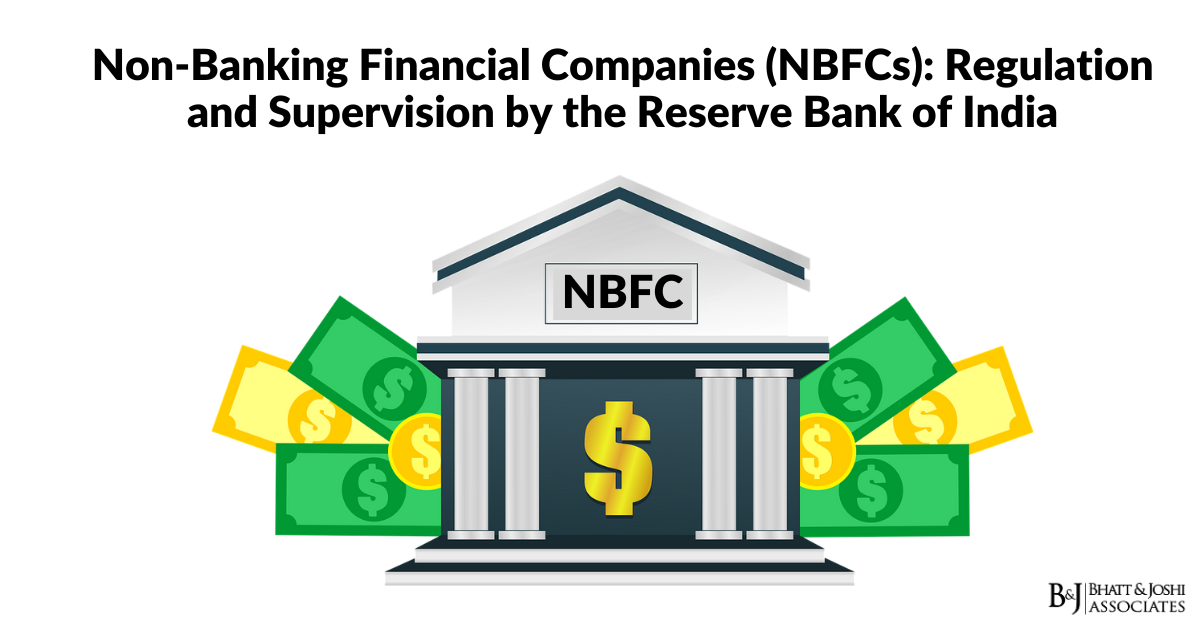Introduction
Non-Banking Financial Companies (NBFCs) represent a vital segment of India’s financial system, complementing traditional banking institutions by providing essential financial services to sectors often underserved by conventional banks. These institutions have evolved significantly over the years, adapting to changing economic conditions and regulatory requirements while maintaining their crucial role in fostering financial inclusion and economic growth. The Reserve Bank of India (RBI), as the primary regulator of NBFCs, has developed a comprehensive framework to ensure their stable operation while protecting stakeholder interests.
Historical Evolution of Non-Banking Financial Companies (NBFCs) in India
The history of Non-Banking Financial Companies (NBFCs) in India traces back to the pre-independence era, when these institutions primarily operated as small-scale moneylenders and chit fund companies. The post-independence period witnessed a gradual transformation of these entities into more organized financial institutions. The 1960s marked a significant turning point with the amendment of the Reserve Bank of India Act, 1934, which brought NBFCs under RBI’s regulatory purview. This period saw the emergence of equipment leasing companies, hire-purchase finance companies, and investment companies.
The 1990s brought substantial changes to the NBFC landscape following India’s economic liberalization. The sector experienced rapid growth, accompanied by several challenges that highlighted the need for stronger regulation. The RBI Amendment Act of 1997 introduced comprehensive regulations for NBFCs, including mandatory registration, minimum net owned funds requirements, and prudential norms. These reforms were further strengthened in the wake of the Saradha Group scandal and other financial irregularities, leading to more stringent oversight and regulatory requirements.
Definition and Classification of Non-Banking Financial Companies (NBFCs)
The Reserve Bank of India Act, 1934, defines an NBFC as a company engaged in the business of loans and advances, acquisition of shares, stocks, bonds, debentures, or securities issued by government or local authority, or other marketable securities. However, this definition excludes institutions whose principal business is agriculture, industrial activity, purchase or sale of goods, or provision of services. The RBI has further refined this definition through various circulars and notifications to address evolving business models and market conditions.
NBFCs are classified into different categories based on their activities, liability structure, and size. The primary categories include Asset Finance Companies (AFCs), Investment Companies, Loan Companies, Infrastructure Finance Companies (IFCs), and Systemically Important NBFCs. Each category is subject to specific regulatory requirements designed to address their unique risks and operational characteristics. The classification system has evolved over time to accommodate new business models and address emerging risks in the financial sector.
Regulatory and Legal Framework for Non-Banking Financial Companies (NBFCs)
The regulatory framework governing NBFCs is primarily derived from the Reserve Bank of India Act, 1934, and various directions, guidelines, and circulars issued by the RBI. The framework encompasses multiple aspects of NBFC operations, including registration, capital adequacy, governance, and operational requirements. The Companies Act, 2013, also plays a crucial role in governing the corporate aspects of NBFCs, while specific regulations like the Prevention of Money Laundering Act, 2002, address particular operational aspects.
The legal structure for NBFC regulation has been strengthened through various amendments and new regulations. The Financial Resolution and Deposit Insurance Bill, though not enacted, has influenced the regulatory approach toward NBFCs. The Insolvency and Bankruptcy Code, 2016, has provided a framework for resolving stressed NBFCs, while the Securitisation and Reconstruction of Financial Assets and Enforcement of Security Interest Act, 2002, has enhanced NBFCs’ ability to recover dues.
Registration and Licensing Requirements for Non-Banking Financial Companies (NBFCs)
The registration process for Non-Banking Financial Companies (NBFCs) involves a comprehensive assessment of various parameters by the RBI. New entities seeking NBFC registration must demonstrate adequate capital, proper governance structures, and viable business plans. The minimum Net Owned Fund requirement, currently set at ₹2 crore, ensures that only well-capitalized entities enter the sector. The RBI conducts detailed due diligence of promoters, directors, and key management personnel to assess their fit and proper status.
The registration process also includes verification of the proposed business model, infrastructure adequacy, and risk management systems. The RBI has introduced additional requirements for NBFCs planning to accept public deposits, including credit ratings and specific capital adequacy norms. Recent regulatory changes have streamlined the registration process while maintaining rigorous standards to ensure system stability.
Capital Requirements and Prudential Norms
The capital requirements for NBFCs represent a crucial regulatory tool implemented by the RBI to ensure financial stability and protect stakeholder interests. All NBFCs are required to maintain a minimum Capital to Risk-Weighted Assets Ratio (CRAR), with the specific ratio varying based on the NBFC category and business model. Deposit-taking NBFCs must maintain a higher CRAR compared to non-deposit taking entities, reflecting the additional risks associated with public deposits. The RBI regularly reviews and adjusts these requirements based on market conditions and systemic risk assessments.
The prudential norms encompass various aspects of NBFC operations, including income recognition, asset classification, and provisioning requirements. These norms have been progressively aligned with banking sector standards while maintaining certain distinctions to reflect the unique characteristics of NBFC business models. The implementation of Indian Accounting Standards (IndAS) has further refined the financial reporting framework for NBFCs, introducing more sophisticated approaches to provisioning and asset valuation.
Deposit Acceptance and Restrictions
The RBI maintains strict control over deposit acceptance by NBFCs to protect public interests and maintain system stability. Only NBFCs specifically authorized as deposit-taking institutions can accept public deposits, subject to credit rating requirements and maintenance of liquid assets. The maximum amount of deposits that can be accepted is linked to the NBFC’s net owned funds, and the period of deposits is regulated to ensure proper asset-liability management.
The regulatory framework for deposit acceptance includes detailed guidelines on interest rates, tenor of deposits, and premature withdrawal conditions. NBFCs must maintain statutory liquid assets as prescribed by the RBI, typically in the form of government securities or approved bank deposits. The failure of several deposit-taking NBFCs in the past has led to increasingly stringent regulations in this area, with enhanced monitoring and reporting requirements.
Asset Classification and Provisioning Norms
Asset classification norms for NBFCs have evolved to provide a more accurate picture of asset quality while considering the sector’s unique characteristics. The classification of assets into standard, sub-standard, doubtful, and loss categories follows specific timelines and criteria established by the RBI. The recent harmonization of asset classification norms with banking sector standards has increased the robustness of NBFC balance sheets while posing implementation challenges for smaller entities.
Provisioning requirements are designed to ensure adequate coverage for potential losses while maintaining NBFC viability. The provisions vary based on asset classification, security coverage, and exposure type. The introduction of expected credit loss-based provisioning under IndAS has further refined the approach to loss estimation, though smaller NBFCs continue to follow simpler provisioning rules.
Corporate Governance Requirements
Corporate governance requirements for NBFCs emphasize board responsibility, risk management, and internal control systems. The framework includes detailed guidelines on board composition, committee structures, and management oversight. Independent directors play a crucial role in ensuring proper governance, with specific requirements for their appointment and responsibilities. The fit and proper criteria for directors and senior management have been strengthened over time, reflecting lessons learned from past governance failures.
Risk Management Framework
The risk management framework for NBFCs encompasses various types of risks, including credit, market, operational, and liquidity risks. The RBI has mandated comprehensive risk management systems, particularly for larger NBFCs and those accepting public deposits. This includes requirements for regular stress testing, maintaining adequate liquidity buffers, and implementing robust internal control systems. The Asset-Liability Management (ALM) framework has been strengthened to address maturity mismatches and ensure stable funding profiles.
Supervision and Inspection Mechanisms
The RBI’s supervision of NBFCs operates through both off-site monitoring and on-site inspections. The frequency and intensity of supervision vary based on the NBFC’s size, complexity, and risk profile. The supervisory framework includes regular reporting requirements, thematic reviews, and special inspections when necessary. The introduction of the Scale Based Regulation (SBR) framework has further refined the supervisory approach, with more intensive oversight for larger and more complex NBFCs.
Recent Regulatory Changes and Developments
Recent years have witnessed significant changes in NBFC regulation, driven by market developments and lessons from past crises. The introduction of the SBR framework, prompt corrective action mechanisms, and enhanced disclosure requirements represent major regulatory initiatives. The covid-19 pandemic led to temporary regulatory forbearance while highlighting the need for stronger liquidity management and stress testing frameworks.
Challenges Facing NBFCs and Future Prospects
The NBFC sector faces several challenges, including funding constraints, asset quality pressures, and increasing competition from banks and fintech companies. The regulatory framework continues to evolve to address these challenges while promoting sector stability and growth. Future developments are likely to focus on technological integration, enhanced risk management, and closer alignment with banking sector standards while preserving the unique role of NBFCs in financial intermediation.
Conclusion
The evolution of NBFC regulation in India reflects a careful balance between promoting financial inclusion and ensuring system stability. The RBI’s regulatory framework has successfully adapted to changing market conditions while addressing emerging risks and challenges. As the sector continues to evolve, the regulatory approach will likely maintain this balance, fostering innovation while ensuring adequate oversight and stakeholder protection. The success of this regulatory framework will be crucial in determining the NBFC sector’s role in India’s financial system and its contribution to economic growth.














